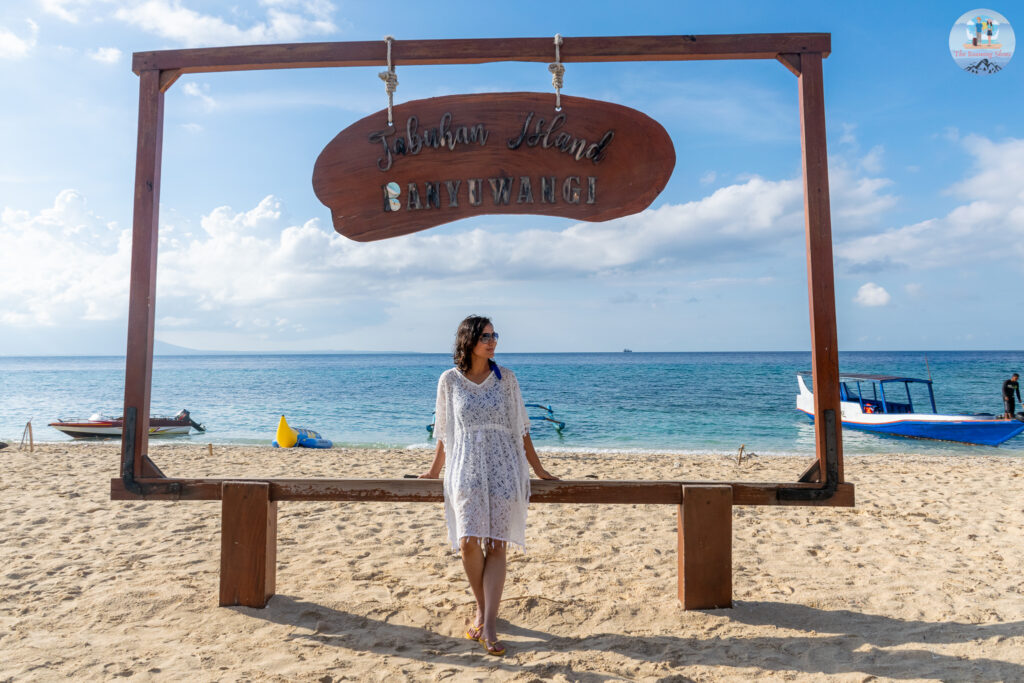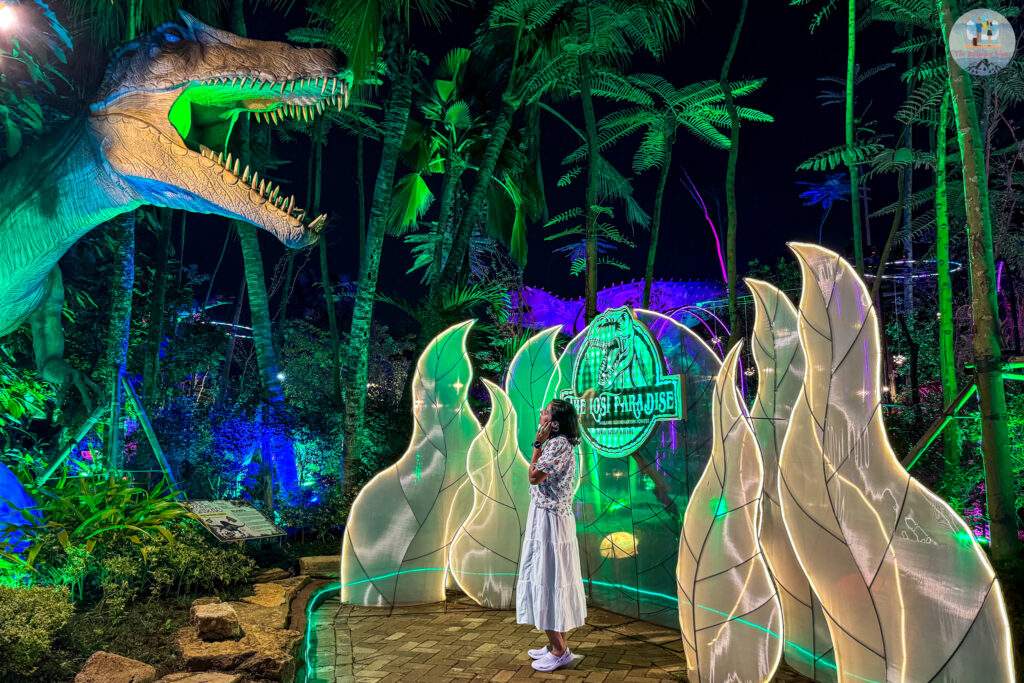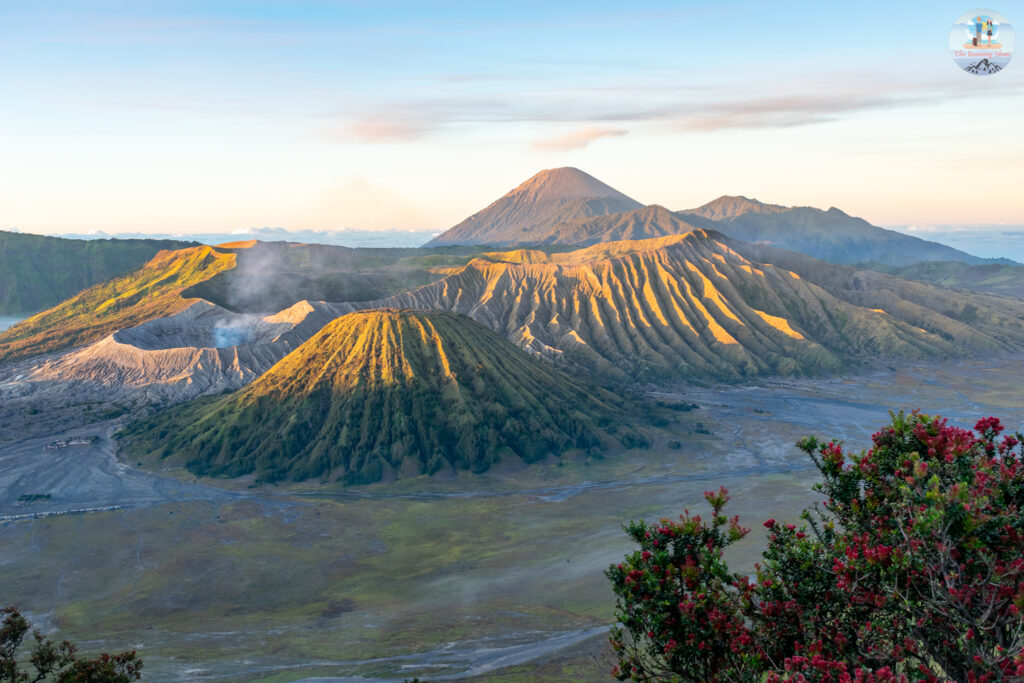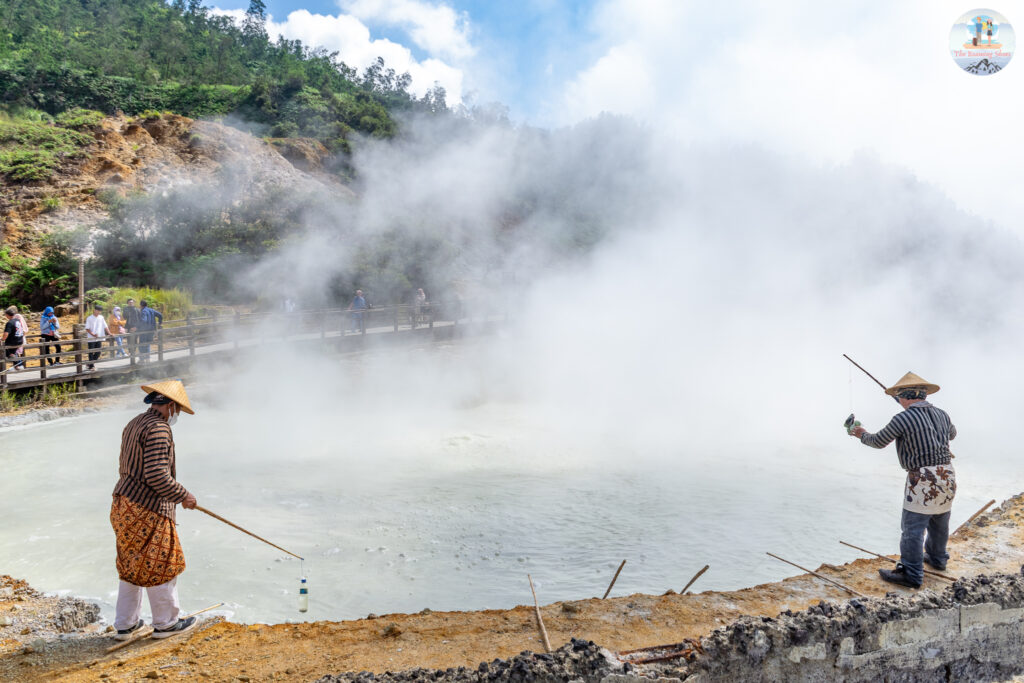Java Travel Guide: Itinerary Breakdown & Insider Tips
We have told you everything you need to know for planning your first trip to Java in Part 1 of this series: Experience the magic of Java, Indonesia – Your Ultimate Travel Guide. So now, it is time to jump to the next important thing, itinerary breakdown. In this blog we will tell you how you can experience the best of Java including it’s natural wonders, cultural heritage along with some unique man made attractions in a week’s time. So let’s get started.
Java Itinerary Breakdown
Day 1: Arrival in Surabaya and proceed to Banyuwangi
This day was uneventful as we focused on reaching our first destination in Java, Banyuwangi. We arrived at Surabaya airport in the evening and then made our way to the train station to catch the overnight train to Banyuwangi at 10:45 pm. The train journey typically takes about 6 hours.
If you arrive earlier in the day, there is an afternoon train that allows you to reach Banyuwangi on the same day. Banyuwangi will be your base for exploring Ijen Crater and West Bali National Park.
Day 2: Arrive in Banyuwangi. Day trip to West Bali National Park
We reached Banyuwangi early in the morning. And after a quick nap and freshening up, took a day trip to Menjangan and Tabuan Islands. While most visitors stay overnight in Banyuwangi to visit the Ijen Crater, we highly recommend this island tour based on our experience. Trust us, you’ll be pleasantly surprised!
Menjangan Island, nestled in the West Bali National Park, boasts some of the most breathtaking coral reefs and a rich variety of marine life. Also, there is a high chance that you may spot the Menjangan Deers up close on the island. Spend your day snorkeling, relaxing on the pristine beach, and soaking in the stunning views.
On your way back, stop by Tabuan Island in Banyuwangi for more snorkeling and beach time. Even the boat ride to these islands is amazing, offering incredible views




Day 3: Ijen Tour. Later, explore local attractions in and around Banyuwangi.
The Ijen tour typically starts at midnight, with a return to your accommodation by 9-9:30 am. This adventure has two parts: witnessing the rare Blue Fire, seen at only two places in the world, and the Turquoise Crater Lake, one of the most acidic lakes globally.
Hike Details:
- Crater Rim Ascent: The challenging hike to the crater rim takes approximately 1.5-2 hours from the entry gate.
- Blue Fire Descent: To see the Blue Fire, you descend into the crater through a rocky, uneven path, which takes around 45 minutes to 1 hour. The sight of the Blue Fire makes it all worthwhile.
- Crater Rim Ascent: After this, you climb back up to the crater rim (approx. 1 hour) to watch the sunrise and enjoy the enchanting views of the turquoise-colored Crater Lake.
- Return Descent: Finally, you descend back to the starting point, that takes another hour or so.
The breathtaking sight of the Blue Fire and the surreal view of the Crater Lake at sunrise make this whole trip an unforgettable adventure.


As I mentioned, Ijen tour is quite exhausting. If you still have energy afterward, consider visiting Jagir Waterfall, just a short taxi ride from town. Alternatively, spend the evening relaxing at one of the local beaches. We opted for the latter, simply crashing after the tour. While the beach itself wasn’t very clean, the nearby yacht club provided the perfect ambiance to unwind and enjoy the evening.

Day 4: Train to Malang. Explore local attractions of Malang.
Having explored Ijen, it’s now time to move on to Malang, another charming town in East Java. Malang will serve as our base for visiting the magnificent Tumpak Sewu Waterfall and the iconic Mount Bromo. The train reaches Malang early in the afternoon, so you will have enough time for local exploration on this day.
Check in to your accommodation and grab some lunch. Then head out to visit the colourful villages of Jodipan (aka Kampung Warna Warni) and Kampung Tridi. As the name suggests, the houses in Jodipan are painted in vibrant colors, and the walls are adorned with beautiful murals. A charming bridge over the river offers stunning views of the entire setting, while narrow streets are draped in pretty canopies. However, it’s not just the colors but the history that makes this place so special.
Once a slum, Jodipan was transformed into a vibrant tourist spot thanks to the efforts of university students and the support of a paint company. This change also inspired the transformation of nearby villages, including Kampung Tridi. Set aside an hour or two to explore the kaleidoscopic corners of these villages. Just opposite Jodipan, there’s another village where all the houses are painted blue. The villagers charge a small entry fee for both Jodipan and Tridi villages.


In the evening, book a Grab and visit the lesser known Malang Night Paradise, a night theme park some 45 mins ride from the town. It has some stunning visual displays that literally transports you into a magical world. Yes, we are talking about fairytale castles, dreamy set ups, cutesy rides and tunnels made of fairy lights. And when you are there, do not miss the magical boat ride, the main highlight of this park, which comes at an additional cost but is truly worth it.
Thats’s not all. Malang Night Paradise also a Dino park where the installations remarkably look lifelike in a forest-like environment. One guy literally gave me a heart attack when it moved its head while I was standing close to it :D. So, if you are a romantic or a youthful spirit, this enchanting place in Malang is a must visit. Keep at least 2 hours to relish the charm of this place leisurely.
Entry fee for Night Paradise (with some complimentary rides and boat tour): 120,000 IDR per person


Day 5: Tumpak Sewu Waterfall Tour from Malang
Spend this day chasing waterfalls in the region, where you’ll find quite a few stunning options to choose from. Tumpak Sewu is an absolute must-see, but which other waterfalls you visit will depend on your available time and preference. While most people combine Tumpak Sewu with the nearby Goa Tetes, we decided to visit the Kapas Biru waterfall instead.
It takes 2 hours to reach Tumpak Sewu by car from Malang. And then another half an hour to trek down to the base of the waterfall. Before heading down, stop at the panorama view point for some pictures and a stunning view of the fall. The walk down to the base of the fall is not easy with sketchy bridges, steep stairs and even a waterfall to cross on the way. But once you are there, it feels like a stepping in to a different world. Afterwards, if you are interested, walk towards Goa Tetes waterfall which is a cave waterfall and is in the same valley as Tumpak Sewu. Since we had to visit Kapas Biru, we hiked back up and visited the naturally formed cave near by with a small waterfall before driving towards Kapas Biru.
Entry fee for Tumpak Sewu
- Panorama view point: 50,000 IDR per person
- Entry into the base of the fall: 20,000 IDR per person
It takes 20 mins to reach the panoramic view point of Kapas Biru. To reach the base of the waterfall, it is another hour of trek from a different point. Make sure to do this trek by early afternoon since the area gets dark by 4pm due to dense tree cover.
Retire early for the night as your Bromo tour starts at midnight.




Day 6: Bromo Sunrise tour from Malang. Later proceed to Yogyakarta.
The day has finally arrived to witness the famed sunrise over Mount Bromo, an active volcano in the region. The tour normally lasts 11-12 hours with a mid night pick up. After 2 hours of jeep ride in the dark with the last part through a field of sand, you reach the view point for the sunrise. Depending on which tour operator you have chosen, they will take you to one of the 3 designated sunrise points. Don’t worry, all are good as long as you avoid weekends and school holidays when the crowd is overwhelming.
Our operator took us to King Kong Hill view point. Luckily we met a local guide there who took us to another lesser know point close by with unobstructed view of the crater and the whole otherworldly landscape. After the sunrise, have some breakfast in the stalls nearby before hopping into your jeep. You will then visit the vast sea of sand for pictures and then to the very active Bromo crater. It takes 30-40 mins to reach the crater from the sunrise point parking. With a few more stops at different view points, the tour ends and you will be back at your accommodation around 11-11:30 am. Freshen up and catch the train to Yogyakarta that takes approx. 6 hours. Check in to your accommodation in Yogyakarta after arrival and rest for the night.
Cost for Bromo Group tour: 300,000 IDR per person


Day 7: Visit Borobodur and Prambanan temples. Explore local attractions of Yogyakarta.
Spend the day exploring the ancient temples around Yogyakarta, including the renowned Borobudur and Prambanan, both UNESCO World Heritage Sites. While Borobudur is famous as a sunrise destination, Prambanan is ideal for sunset. Many tours from Yogyakarta combine visits to both temples, with Borobudur at sunrise followed by Prambanan. However, Borobudur can get pretty crowded during sunrise, especially on weekends. That is why we opted to visit Borobudur in the evening on the way back from Dieng Plateau (on Day 9) and discovered that sunset from the temple is equally stunning. We recommend visiting Borobudur and Prambanan separately to fully appreciate each site without the rush and also to avoid that temple overdose.
Now coming back to the plan of the day, start your day after a night of proper rest and good breakfast. In the morning, explore Yogyakarta’s local attractions like the Water Castle (Taman Sari) and Yogyakarta Palace. After lunch, around 2-2:30 pm, head to the Prambanan temple complex. Allocate 2 hours for your visit and consider hiring a guide to learn about the beautiful Ramayana stories and the various temples. Despite being the largest Hindu temple complex in Indonesia, majority of the temple are in ruins are gradually getting restored. As we understood from our guide, out of 240 temples, only 18 have been restored by now, leaving 122 more to go. There is a Ramayana Ballet that happens in the open theatre at Prambanan on certain days. Enquire beforehand and plan accordingly if you are interested.
Temple Visit – Know before you go
- There are many other temples not too far away from Prambanan temple such as Sewu Temple (1 km away) or Ratu Boko temple (3 kms away). But all these temples close around the same time in the evening. If you are interested in visiting these too, plan accordingly.
- You can either book a group tour, hire a private car with driver, take the bus or book a grab for visiting the temples. We visited Borobodur as part of Dieng Trip and used Grab for Prambanan temple visit. Grab cost us around 100,000 IDR each way.
- It takes 40 mins-1 hour to reach Prambanan by car from Yogyakarta. Borobodur is approximately 1.5 hours ride away. This may vary depending on traffic.
- Book your tickets beforehand online for both the temples, preferably 2/3 days back if you plan to visit on weekends. We luckily got the last slot (for Saturday) to visit Borobodur when we tried to book the previous day. The last slot for 4-5 pm is ideal for watching sunset from Borobodur.
- Now there are 2 types of tickets issued for Borobodur, one to explore the grounds and one for the temple structure. Opt for the latter as the ground ticket does not allow access to the temple structure. Temple structure ticket includes a guided tour too.
- There is also a combo ticket available at a lower price for both Prambanan and Borobodur. But that would not help since it only includes ground ticket for Borobodur. Also, this works if you visit both temples on the same day. You can check on Klook for any offers on the entry tickets.
- Once you reach Borobodur for your visit, they will give you a brand new pair of Upanat sandals (that you get to keep) and a bag to carry your own footwear. And they will assign you a guide (normally one for a group of people) who will take you on a tour of the temple complex.
- The guided tour lasts an hour where the guide explains the story behind the structure and the carvings and last 20 mins will be for exploring the top levels of the temple and taking pictures.
- There is no doubt both the temples are impressive and definitely a must visit . And being an Indian who grew up listening to the stories of Ramayana or Gautama Buddha, the carvings and the stories told by the guides felt so relatable. Yet, I felt the entry tickets were a little too high, considering everything. It was almost 1700,000 IDR (~9k in INR) for both temples for 2 people. Then, we paid an additional 150000 IDR for the guide at Prambanan.




Day 8: Yogyakarta – Day trip to Dieng Plateau. Evening at Maliboro Street.
You simply cannot miss a day trip to Dieng Plateau when you’re already in Central Java. This volcanic highland, just 3-4 hour drive from Yogyakarta, boasts some of the oldest temples, volcanic lakes, and an active crater mud pool. The landscape is stunning with terraced farming, and the weather is refreshingly cool. If you are eager to catch the sunrise from one of the viewpoints on the plateau, an early start around 1:30-2 am is recommended. However, we were quite tired from all the midnight tours, so we decided to skip the sunrise and began our journey at 4 am from Yogyakarta, arriving at 7 am. The entire ride was absolutely beautiful, offering postcard-like views along the way.
There are basically 4 places to visit in Dieng Plateau – Arjuna Temple Complex, Telaga Warna Lake, Sikidang Crater and Batu Ratapan Angin View point. You can cover it all comfortably in maximum 3-4 hours. When you are there, remember to try the local snacks too. Since the region produces the most potatoes, trying some potato snack is a must. We also loved the Kue Rangin made by an elderly uncle at Telaga Warna lake.



Once you return from Dieng, freshen up and head to Malioboro Street, the bustling heart of Yogyakarta. This beautifully planned 1 km stretch is flanked by trees, including some very old ones, and offers plenty of chairs for sitting and relaxing. The street is lined with shops, cafés and street performers, creating a lively atmosphere. You can do so much here. Grab a coffee, sit down, and opt for a leg massage to melt away your tiredness. Shop for knick-knacks or Batik clothes, and savor local food at one of the street stalls. Take a leisurely stroll and end the day with some gelato before returning to your stay in a Becak or horse-drawn carriage. It’s the perfect way to end the day, isn’t it?


Other than Dieng Plateau, there are many other day trips from Yogyakarta offering a variety of activities and experiences. Choose depending on your preference. Here are a few options to consider.
- Jomblang Cave: A vertical cave with its famous heavenly light beam. The sun rays pass through the cave during a certain time of the day creating this mesmerising effect.
- Timang beach: Known for its rugged beauty and the adventurous Gondola ride to the rocky outcrop.
- Pindul Cave: For a unique cave tubing adventure
- Kalibiru National Park: A scenic park offering gorgeous views and some beautiful photo spots. Remember these are all paid photo spots and get very crowded on weekends.
Day 9: Yogyakarta to Surabaya. And fly back home.
The trip comes to an end and it’s time to bid adieu to Java after all the adventures. Since there were no available flights from Yogyakarta on our departure day, we had booked our flights from Surabaya instead.
If you are in similar situation and need to catch your flight back from Surabaya, I highly recommend taking the morning train from Yogyakarta. It is faster and economic with lovely views on the way. The train takes 4 hours to reach Surabaya.
Conclusion
That’s it – our itinerary and list of must-visit places in Java. If you love adventure-filled holidays, this stunning island should be on your bucket list. And we can assure you that Java will leave you spellbound and reward you with memories to last a lifetime.
So go ahead and plan your Java adventure with your partner in crime. Feel free to reach out with any queries. Happy travels!
Please note that all prices mentioned in this blog are effective as of June 2024.



Great and useful information.
Thanks Carol. Glad you found the blog useful.
Hi Guys, stumbled upon your blog while researching for my trip to JAVA in June. Being travelling solo I was finding it difficult to get any decent quote from tour companies. However your trip going all the way to the nearest villages and then going with a local tour group puts some ray of hope. A few questions hence,
1. The train tickets both for your Ijen and Bromo base towns, you booked in advance? if yes how.
2. How did you connect with the local tour groups with who you did the tours.
Regards
Deb
Hi Debarchan,
You do not need to directly contact tour companies. The best way to get affordable tours is by going through your accommodation. Just talk to your homestay owner and they will help you. We did the same. For train tickets, use traveloka or tiket.com.
For more details on Java planning, refer our other Java blog.
https://theroamingshoes.com/2024/07/experience-the-magic-of-java-indonesia-your-ultimate-travel-guide/
Have a great trip.
Cheers,
Ava and Sush
Hello Ava & Sush,
Greetings from a 75-year old traveller from Chandigarh, India!
What a great job you guys have done with your exhaustive blog! Hats off to you!
I am planning a trip to Bali and Java in the second half of September. I hope I get good weather for the 10 odd days that I intend being there. My plan is to fly to Depensar (Bali) and then make a road (and ferry) trip to Banyuwangi. I will then follow your footsteps and cover Malang, and Yogyakarta.
From Yogyakarta, I will go to Jakarta (any interesting places on the way?) for my return trip to India.
Dear Deepak Nair Sir,
Thank you so much for your kind words. We’re truly inspired by your spirit. It’s not every day we hear from someone so adventurous at 75! Honestly, do share your fitness secrets – we’d love to be climbing volcanoes like you when we reach that age. 🙂
As for Ijen – September is a good time to visit. The hike is definitely doable if you’re fit, have done treks before, and have no heart or respiratory issues. There’s no official age limit as such, but we didn’t see anyone above 50 during our hike. It’s best to check with a local tour agency beforehand on this, as they do a health check before the hike.
In case you have any difficulty climbing, use the local “Lamborghini” – it’ll take you all the way up to the crater rim. From there, you can enjoy the stunning sunrise and crater lake. However, for the blue fire, you’ll need to climb down into the crater where the path is rocky and steep, and the sulfur smell gets intense as you descend. If you’re confident, you can try it with a guide. But let me tell you, Ijen is still breathtaking without the blue fire.
From Jakarta, Bandung is a lovely highland city to visit with craters and tea estates. But after Ijen and Bromo, we’d suggest taking it slow and relaxing a bit before returning home. Hope this helps.
Do let us know how your trip goes – especially Ijen. We’ll be cheering for you!
Warm wishes,
Ava & Sush
Hello Ava & Sush,
Please tell me why you do not recommend jeans for the Ijen trek.
I ask because I do most of my foreign tours with just a couple of pairs of jeans 😉
Deepak
Dear Nair Sir,
As the Ijen hike is steep, something lightweight and more flexible than jeans is more convenient for ease of movement. Also, if it rains, jeans do not dry up easy. That said, it’s not that jeans are entirely unsuitable – if you’re comfortable in them and used to hiking that way, it’s absolutely your choice.
Cheers,
Ava and Sush
Hello, I read your Bali blog and found it very impressive. I was hopping you could help me- could u please share the agents contact number for mount bromo tour? it would be really helpful
Hello Shruti,
I believe you are talking about the Java blog.
We do not have the contact number of the tour agency. We booked the tour through our host in Malang, Java. And if you are visiting Java, you can very well go through your homestay. But if you are planning this tour from Bali, then you may have to find a local operator there. Just look for their reviews before booking.
Hope this helps.
Cheers,
Ava and Sush